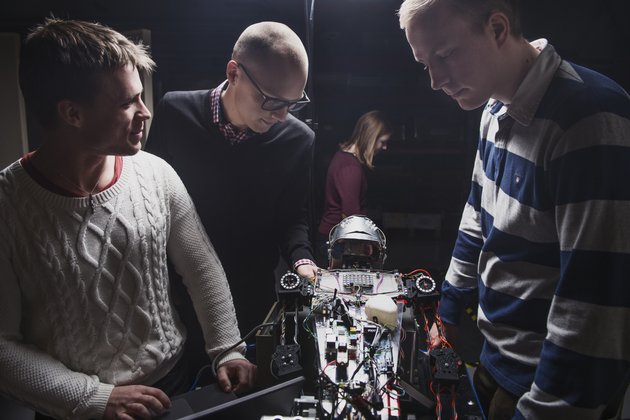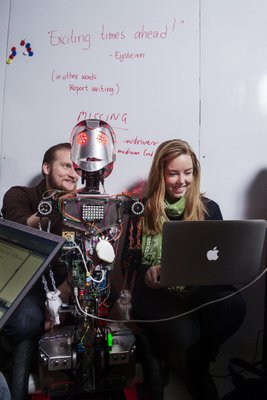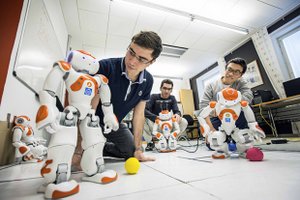Towards a more human robot

What’s not to love about a robot that dances or plays piano? Here are four amazing stories about how robotic expression, and even cooperation, are being developed at KTH Royal Institute of Technology.
Rocking robot pays tribute to Robyn

When a team of mechatronics students built a robot dedicated to Robyn, they didn't expect the pop star to become personally involved. Their dancing "Robyt" not only generated hands-on interest from the singer, but they found themselves presented with a unique chance to experience the often challenging realities of product development. Full article
Face to face with the social robot
Furhat raises the bar for spoken interactions between humans and machines. It replaces the disembodied voice with an expressive face that shifts its gaze to the person whom it is addressing. Capable of interacting with multiple people, the social robot, supported by highly complex conversational capabilities, also has real-time synchronization of its words, facial expressions, and lips, enabled by technology developed at KTH. Full article
Replicating the human voice

In the realm of human speech synthesis, the Eunison Project takes a different path. Instead of resorting to an elaborate series of pre-recorded audio segments, the international project is building a simulation of the physics by which the voice produces a signal. A joint, multidisciplinary project of which KTH is the coordinator, Eunison involves a detailed computational model of the human voice – a sort of virtual puppet – that can be controlled with input signals at different levels of representation; topological, neuromotoric, phonetic; and that will render as outputs the system's physics, including sound and 3D visualisations. Full article
Robots learn to cooperate
In the not so distant future, robotics will play a major role in service-oriented tasks of everyday life – at home, in the classroom and at work – and robotic vacuum cleaners have already made their way into our homes. But sometimes a single robot is not capable enough to carry out a certain task, such as moving heavy objects. A project at KTH aims at enabling robots to understand when another robot needs help, and to change their plans accordingly. Full article

Computer-generated expressiveness
When it comes to music performance, the terms “robotic” and “expressive” need not be mutually exclusive. Anders Friberg and Roberto Bresin are the KTH researchers behind Director Musices, a performance rendering system that introduces expressive variations to input scores, such as time, timbre and sound level. They organized a summer competition in which computer systems were tested for how expressively they rendered musical scores ( covered in Wired, September 2013 ).
David Callahan

